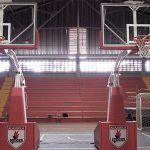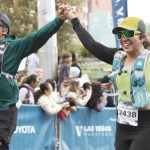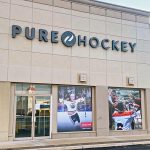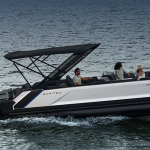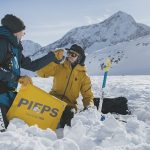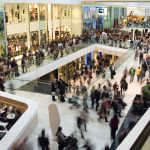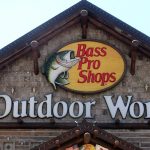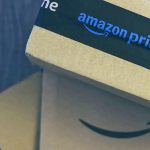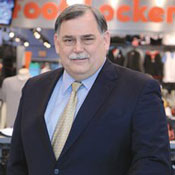 Foot Locker Inc. marked the best year in company history in 2011. Comp sales were up 9.8 percent with combined growth over the last two years rising 15.6 percent. Gross margin rose 450 basis points over the last two years, of which 250 basis points were due to merchandise margin improvements and 200 basis points were due to leveraging its primary fixed occupancy cost. Sales per square foot reached $406 per gross square foot, ahead of its $400 long-term objective.
Foot Locker Inc. marked the best year in company history in 2011. Comp sales were up 9.8 percent with combined growth over the last two years rising 15.6 percent. Gross margin rose 450 basis points over the last two years, of which 250 basis points were due to merchandise margin improvements and 200 basis points were due to leveraging its primary fixed occupancy cost. Sales per square foot reached $406 per gross square foot, ahead of its $400 long-term objective.
While benefiting from an overall healthy appetite for athletic footwear, the improvement also reflects a program unveiled two years ago by Ken Hicks, the former president and chief merchant at J.C. Penney who became Foot Locker Inc.’s president and CEO in August 2009. The plan called for more clearly defined and differentiated brand banners, strengthening running and casual footwear assortments, developing its apparel side, and making its stores and Internet sites “more exciting places to shop and buy.” The plan also called for e-commerce expansion, new store growth in Europe, and improving store productivity.
At its annual investors meeting in March, Foot Locker Inc. revealed several strategies to accelerate its growth as part of a five-year goal of reaching $7.5 billion in sales by 2016. In 2011, Foot Locker’s revenues reached $5.6 billion.
Here, Hicks discusses the trends impacting the athletic footwear market as well as progress the company is making against its plan.
|
SEW |
How healthy is the athletic footwear cycle? |
|
KH |
I think it’s more than a cycle. Everybody talks about cycles being up or down. It’s really more of a trend to more athletic footwear. As young people mature, they’re used to wearing athletic footwear. So you’re seeing it more in the business place. You’re just seeing more people wear athletic footwear. So that’s an underlying trend. Now, there are some ups and downs to it. And right now one of the things that’s driving the category is what’s going on in technology and lightweight is a big part of it. We’re seeing that in running, we’re seeing that in basketball, and we’re seeing that in cleats. And I would say even with all the lightweight shoes we sold, most people still don’t have a lightweight shoe. So there’s the trend, then the technology and the third thing that’s driving it is there’s a lot more fashion. No question. Color is important and we’re seeing a lot more color. So as far as I can see, the trend looks like it will continue.
|
|
SEW |
What’s driving the pickup in basketball? |
|
KH |
I think basketball had gotten stale and now there’s several things working. One again is technology. You see new lightweight versions. And you’re seeing new different kinds of things to protect your ankle and different inserts so that’s making the shoe more functional. The second thing is from the look. There’s a lot more color and changes that are getting the person who is a real sneakerholic to say, ‘Geez, I need that one and I need this one.’ And then the third thing is that we have a lot of stars. The kids will say, ’I want the Kobe. I want the Lebron. But I also want to get the Howard and the Rose and the Durant.' So there’s just a lot more options out there for the kids. It used to be, ‘I liked Mike or I don’t like Mike.’ And you might not have bought his shoes because you didn’t like him. But now I may not like Kobe or may not like Lebron but I do like Kevin or I do like Derrick so I’ll buy their shoes. So you got more people following them and there’s also more opportunity to see them.
|
|
SEW |
What brands are driving the run side? |
|
KH |
We’re doing a much better job with New Balance technical and Asics technical brands and we’ve got Brooks and Saucony now in more stores. But quite frankly Nike with the Lunar and Frees has really stepped up their game. They’ve moved well beyond the Pegasus. So that’s helped. And even Adi has gotten back into the game in a big way along with Reebok with the Flex and Zig.
|
|
SEW |
Are you participating in the minimalist trend? |
|
KH |
We’re doing great with the New Balance Minimus. I think the FiveFingers was a novelty but now we’ve got Minimus and the ultra-lightweight shoes from Saucony and Brooks. So we see an opportunity.
|
|
SEW |
Are your stores equipped to sell minimal and other technical shoes? |
|
KH |
We’re improving. In a store like our flagship on 34th St. or in our Run stores, they’re pretty good at it. But we’ve limited the real technical shoes to a number of stores. It’s only in a couple hundred stores so we’re trying to not stretch it too far and too fast where it’s beyond our capability.
|
|
SEW |
What insights are you gaining from Foot Locker Run? |
|
KH |
It’s a number of things. One is the selection. We know which shoes to bring into the core stores. We know how better to merchandise. For example, what socks to have when merchandising with the shoes. We know what apparel to have. And we also are learning the training skills so that we know how to sell better.
|
|
SEW |
What type of running customer is Foot Locker’s core stores reaching? |
|
KH |
I think the real, real hard-core, that’s going to be a challenge for us. The guy who’s running 40 miles a week. But we can reach the person who is the casual jogger, who maybe runs three or four times a week or maybe 10 miles a week. Where we probably have a really strong position is the guy or gal who goes to 24 Hour Fitness or goes to their apartment gym to work out in. That’s where we really got an advantage and that group is certainly larger than those running 40 miles a week.
|
|
SEW |
What’s the growth potential for Foot Locker Run? |
|
KH |
We just opened a store in Dallas so we’ll open some when we find the right places. But for us, it’s a small chain. It’s more about learning. They provide some good information. But that’s a more complicated business for a chain to run.
|
|
SEW |
What's driving the turnaround in apparel? |
|
KH |
We had too much of a focus on footwear so we brought in experienced apparel people to run that side of the business. And I think we’re doing a much better job. It’s growing again. We want to get it back to around 30 percent of the business, and now we’re at 23 percent. We’re selling more technical product in apparel and we’re selling more coordinated items. At our 34th. St. flagship, for example, you’ll see one of our hot colors this spring is mint and we’ve got shirts and shoes to go with the mint. And we also have the ability through our Team Edition subsidiary to print up t-shirts and have the best t-shirts out there.
|
|
SEW |
Why has women’s overall been such a struggle? |
|
KH |
The problem is and it’s a joke, we always wanted to do women’s in the worst way and we have. Basically, we focused on shoes and women focus on apparel. We need to change our mindset and we really need to target the women and not treat her like a man with long hair.
|
|
SEW |
What changes should we expect to see at Lady Foot Locker? |
|
KH |
You’re going to see a lot more apparel. It won’t look like a shoe store that has a little bit of apparel. It will look like an apparel store that’s got some shoes.
|
|
SEW |
What’s the turnaround plan for CCS? |
|
KH |
We put in a new format at the end of February targeting a broader customer segment – not just hard-core skate customer but surf, skate and snowboarding and it’s more lifestyle than just the hardcore skater, which is really where we probably should have been. It’s a little bit older customer and when I say older, it’s moving from 13, 14 year olds to 17, 18. We didn’t even have 32 or 34-inch pants. When all you sell is the 30 and under, you’re going to sell a younger customer.
|
|
SEW |
How are the newer formats doing? |
|
KH |
House of Hoops is doing well. We opened up the Locker Room concept in Europe. We’ve got two of those now and we’ve got another one opening up at the end of the month. And we’re looking at what’s appropriate for women – whether it’s a Lady Foot Locker or not. |
|
SEW |
How far is Foot Locker on its goal of better differentiating banners in the mall? |
|
KH |
We’re probably about half to two-thirds of the way but it’s a continual thing because they have a tendency to kind of creep towards each other. But it’s what’s the next line of apparel we put in Footaction to separate it more from the others and how do we create stronger NBA and NFL shops at Champs to really make them stand out and you'll see how the new Nike NFL shops in Champs will help. And we’re trying to emphasize a stronger running presence in Foot Locker to make our flagship banner stand out.
|
|
SEW |
What do you think of the new NFL/Nike deal? |
|
KH |
I think that’s great. They’ll bring new energy and excitement to it. Reebok is a great company but last year was impacted by both the potential strike as well as the fact that it was their last year so they weren’t going to invest a lot in it. Nike‘s going to invest a lot and bring some new ideas. So I think there will be a lot of excitement that will help that business. You also got New Era so that’s an exciting part of it as well.
|
|
SEW |
What do you think of Nike’s store-expansion efforts? |
|
KH |
I’m not concerned. They’re great at making shoes. We’re a better retailer. And actually quite frankly when they open a store, they help drive more traffic into the mall and our business does fine. They’re going for an older customer. Our customer is somewhat intimidated with the Nike store and we have a better assortment in most of our stores than just a Nike store because we’ve got much broader assortments. And as overall partners, we’ve got a terrific relationship now.
|
|
SEW |
What do you think of the health of malls? |
|
KH |
I think the A malls and B malls are great. The C and D we have to keep an eye on. Some are good and some aren’t as good. But you have to evaluate each one as you move through the lease. There’s some malls that you would say are pretty dead malls. But for us, it’s a good mall because of where itR |

